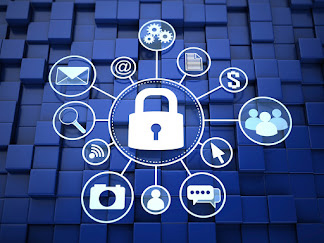ANTIVIRUS IMPORTANCE IN EDUCATIONAL INSTITUTIONS
The recent cyber-attacks that have attacked various companies in recent days, alongside the continual threat of viruses, malware and, generally , any virtual 'entity' which will affect the privacy and security of our computers, have made the Those responsible of laboratories and computer rooms in schools are aware of improve the extent of protection of these devices while using antivirus and few other points that should be kept in mind.
Today we would like to delve into this question and mention the way to shield school computers to form them safer and protect them against of these external attacks. To do this, we propose some ideas and tips designed specifically to use within the computer rooms of faculties.1. Computers, Always Up To Date
Precisely the ransomware attacks
that occurred in mid-May 2017 affected several hundred computers that were out
of date. Software developers, including those of operating systems, strive to
supply regular updates that fix security holes found in their programs.
These updates are offered freed
from charge and for long periods of your time, so it's essential to stay our
computers and devices always updated with the newest 'patches' available. There
are several ways to try to this, the simplest being to take care of automatic
updates within the system that each little time install what's necessary in the
least times.
2. The Software Must Be Legal
Beyond the moral and moral debate
that involves using non-legal software within the classroom, one among the good
problems of putting in copies downloaded from the web within the educational
environment is that they will open a mess of security holes, and be a headache
within the classrooms.
Legal software also allows us to
put in updates that, like operating systems, solve problems which will be found
in several programs. In addition to the present, we must also avoid downloading
from unsafe sources to avoid installing or using patches or cracks, which are
usually wont to incorporate malicious software on our computer.
Of any program there are always
free alternatives that sometimes fulfill the function of the primary. For
example free programs to edit images, CAD design or platforms to make a free
website.
3. Antivirus? Yes Thanks
Many years ago, antivirus software became
absolutely essential, even more so within the school environment and with
shared computers to which any student accesses and shares files and files
through USB memory sticks. Having an antivirus installed is important, also as
in fact keeping it updated and with the newest available alerts.
Along these lines, a couple of
years ago Microsoft incorporated its own antivirus into the Windows system,
under the Windows Defender suite, which could also be a stimulating 'native'
option. However, there are dozens of free and paid antivirus which will help us
avoid viruses and malware, both the foremost common and therefore the most
specific.
4. Reset after Every Restart
Mechanisms that reset the pc
after each restart also are quite common within the educational environment. Or
in other words, any action taken by the user are going to be eliminated once
the pc is pack up or restarted.
This initiative is extremely
interesting since it prevents malicious software from remaining on computers,
although it doesn't act until it's restarted. For this functionality it's
possible to try to to it both through hardware (more secure, but also more
expensive) or software.
5. Backups Always Up To Date
One of the worst things which
will happen to your computer when faced with a malware attack, of whatever
type, is that you simply lose the info, files and jobs that you have created
with it. A quick solution is typically to format the pc and reinstall
everything, losing the knowledge stored thereon.
For this reason, and given this
possibility, it's vital to form backup copies every little time. In the case of
computers that are shared in schools, it's essential that every student is
responsible of managing their files and work, saving them on an external device
(such as a USB memory stick) or uploading them to a cloud storage service.
For the laboratory administrator,
it's interesting to possess backup copies of the system and every one the
programs that are installed, for instance through images of the hard disc or
specific software for backups.
6. Have Your Students Use Their Heads
No, if you click thereon link
you'll not inherit a fortune from a Nigerian prince, and if you give your
mobile to an internet site, it's most likely that you simply will have problems
together with your next bills. It is important to use your head, and lots of
times we teachers need to educate our students within the world of the web.
Because beyond the four commonest
pages, on the web there's tons of picaresque that we must know and skills to
affect. Do not install software that comes from unofficial sources, or never
buy anything before making sure; take care what you put in and always make sure
there's no problem. If unsure, avoid it or, at least, determine well before
proceeding.
A few basic tips can prevent and
your students tons of trouble — and their families, of course. And always,
always, confine mind that we don't know who could also be watching us or who
may use the pc on which we are writing. Finally, we recommend that you simply
follow the following pointers to use shared computers in schools to feature an
additional security to your day to day within the classrooms.




Comments
Post a Comment